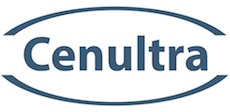Since 6 April 2007, if you rent out a property under an Assured Shorthold Tenancy you are obliged to place your tenants’ deposit in a Tenancy Deposit Protection (TDP) Scheme. This article will explain what a TDP Scheme is, where you can find one, what your obligations are and who is responsible for the deposit if you are using a letting agent.
What is a TDP Scheme, and where can I find one?
Simply put, a TDP Scheme is a government-backed company which either protects or holds your tenants’ deposits and ensures they are returned at the end of the tenancy, unless you are in a dispute with the tenant. There are different types of scheme: a Custodial Scheme is one where you pay the deposit to the company and they will hold it until the tenancy comes to an end, while with an Insured Scheme you retain the deposit and pay a fee for it to be protected.
There are currently three TDP Schemes backed by government: Deposit Protection Service, MyDeposit and Tenancy Deposit Scheme. These Schemes also offer a dispute resolution service in the event of a disagreement over how much of the deposit is to be returned.
What are my obligations?
You must protect your tenants’ deposit within 30 days of the start of the tenancy. If you are given a ‘holding’ deposit you do not need to start protecting it until after the tenancy has officially started. Within those 30 days, you must also supply your tenants with the following information:
- The address of the property;
- The amount of their deposit;
- How the deposit is protected, including the name and contact details of the TDP scheme and their dispute resolution service;
- Your name and contact details, or those of your letting agent where applicable;
- The name and contact details of the third party who paid the deposit, if applicable;
- Reasons why you may keep some or all of the deposit, e.g. in the event of damage repaired at your cost;
- How to get their deposit back at the end of the tenancy, and what to do in the event of a dispute over how much is to be paid back; and
- What to do if they are unable to contact you at the end of the tenancy.
I’m using a letting agent – who is responsible for protecting and returning the deposit?
According to guidance on the MyDeposit website, even if you choose to instruct a letting agent to protect your tenants’ deposit you are still ultimately responsible for the protection and return of the deposit. Therefore if your letting agent ceases trading, becomes insolvent or acts fraudulently you will be liable for the return of the deposit. This doesn’t necessarily mean you should avoid using a letting agent for this purpose, but that you should be careful to use a reputable agent and make sure that they use a segregated bank account to keep the deposit secure. You should also ensure that your agent passes on all required information to your tenants.
For further information on TDP Schemes, the Gov.uk website has a short guide for landlords.




